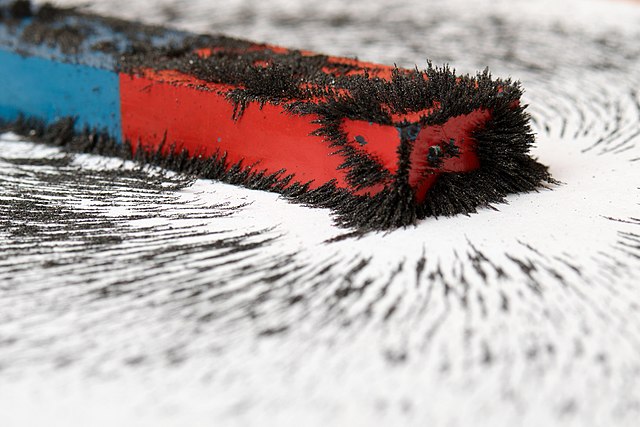Magnetism is the class of physical attributes that occur through a magnetic field, which allows objects to attract or repel each other. Because both electric currents and magnetic moments of elementary particles give rise to a magnetic field, magnetism is one of two aspects of electromagnetism.
The shape of a bar magnet's magnetic field is revealed by the orientation of iron filings sprinkled on the table around it.
An illustration from Gilbert's 1600 De Magnete showing one of the earliest methods of making a magnet. A blacksmith holds a piece of red-hot iron in a north–south direction and hammers it as it cools. The magnetic field of the Earth aligns the domains, leaving the iron a weak magnet.
Drawing of a medical treatment using magnetic brushes. Charles Jacque 1843, France.
A live frog levitates inside a 32 mm diameter vertical bore of a Bitter solenoid in a very strong magnetic field—about 16 teslas
In electromagnetism, the magnetic moment or magnetic dipole moment is the combination of strength and orientation of a magnet or other object or system that exerts a magnetic field. The magnetic dipole moment of an object determines the magnitude of torque the object experiences in a given magnetic field. When the same magnetic field is applied, objects with larger magnetic moments experience larger torques. The strength of this torque depends not only on the magnitude of the magnetic moment but also on its orientation relative to the direction of the magnetic field. Its direction points from the south pole to north pole of the magnet.
Magnetic field lines around a "magnetostatic dipole". The magnetic dipole itself is located in the center of the figure, seen from the side, and pointing upward.





